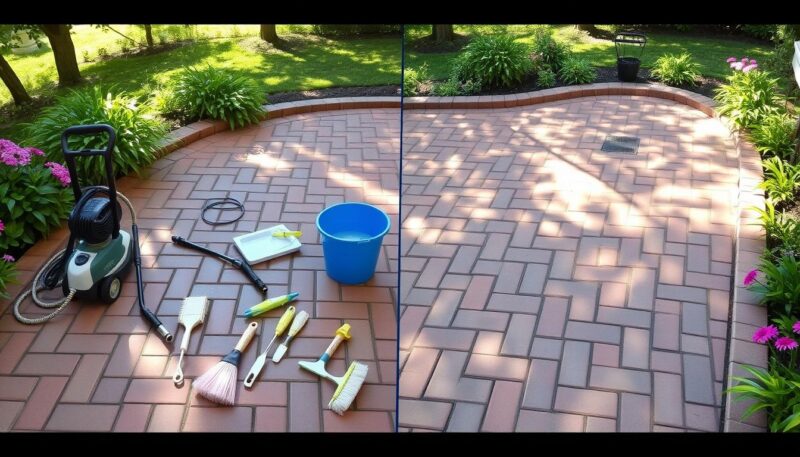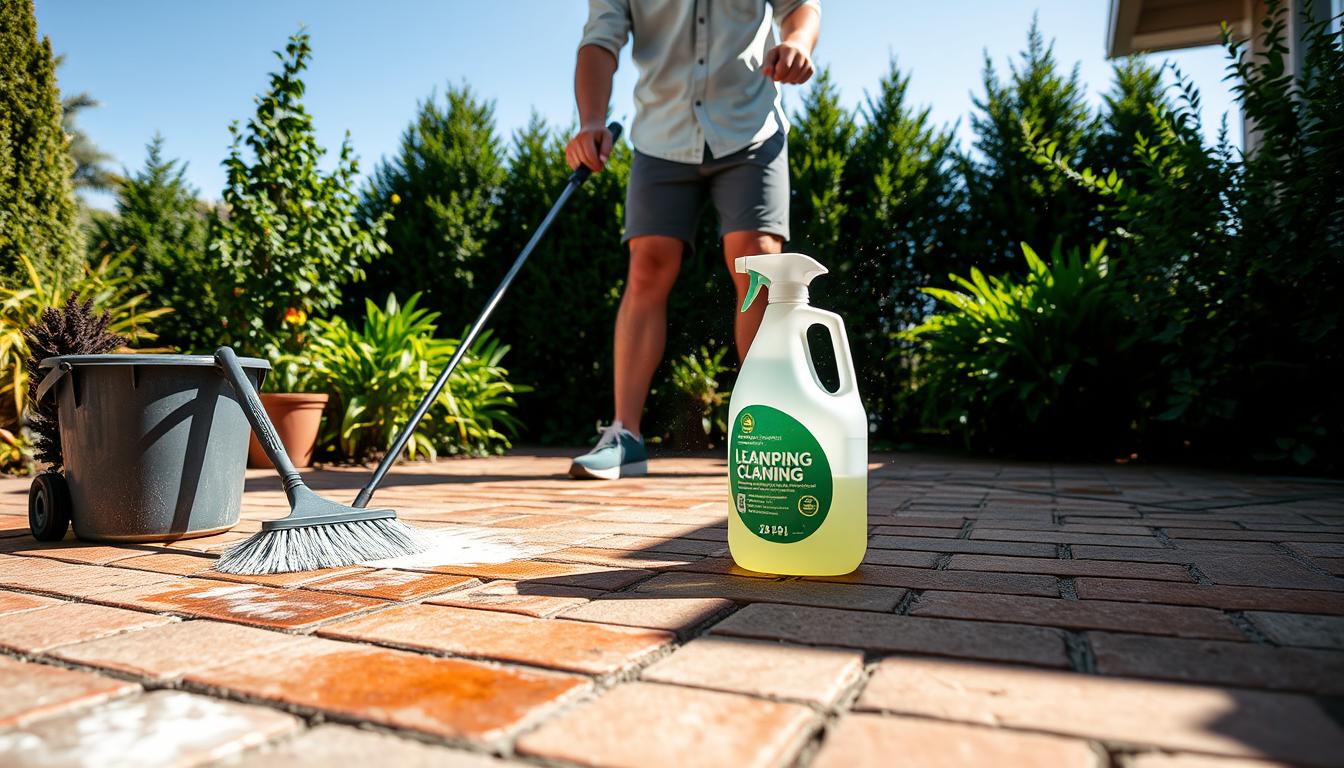Brick patios are a charming and durable addition to any home, offering versatility and timeless aesthetic appeal. However, like any other outdoor feature, they require routine upkeep to retain their pristine appearance. Over time, elements such as weather, spilled beverages, fallen leaves, and foot traffic can leave your patio looking less than its best. Fortunately, with some strategic cleaning techniques and a bit of elbow grease, you can restore your brick patio to its former glory.
Knowing how to clean brick a patio effectively not only enhances its beauty but also helps prolong its life. From using eco-friendly solutions to understanding the best tools and methods, you’ll find that maintaining your patio doesn’t have to be an arduous task. Let’s dive into the world of brick patio maintenance and discover the most effective methods to keep your outdoor space spotless and inviting year-round.
Key Takeaways
- The Brick Industry Association (BIA) recommends cleaning brick pavers when the temperature is above 50 degrees.
- Start with the least harsh cleaning solution, such as detergent and water, before using stronger cleaners.
- White vinegar and water are effective for mildew removal on brick pavers.
- Commercial cleaners, available at home improvement stores, can tackle grease, oil, and rust stains.
- Use a pressure washer with less than 400 psi, keeping a minimum distance of 12 inches from the brick surface.
- Older bricks (over 50 years) are more delicate and require gentle cleaning methods.
Preparation and Initial Cleaning Steps
Establishing a clean and aesthetically pleasing patio requires a meticulous initial setup. This strategic preparation ensures the longevity, stability, and charm of your outdoor spaces while offering thorough protection and easy maintenance.
Remove Debris and Weeds
To begin, clear the patio of any obstructing debris like rocks and twigs. Addressing weed removal is crucial in this stage. You can either manually pull out weeds or use a weed-killing spray, which helps to preserve the integrity of your surface protection without dislodging pavers.
Protect Nearby Landscaping
Before diving into the cleaning brick process, it’s essential to safeguard surrounding landscaping. Shield your plants and soil from potential runoff by covering them with protective materials. This step is imperative for maintaining the patio’s aesthetics and surrounding outdoor spaces.
Initial Rinse
Conduct an initial rinse of your patio using a gentle stream of water. High-pressure washing is not recommended as it can remove the essential sand between pavers and damage the surface protection. Ensure the thorough saturation of pavers to loosen dirt and grime, which paves the way for effective seasonal upkeep.
When done with initial rinsing and cleaning, it’s critical to let the pavers dry completely before reapplying any sealer. This drying step prevents potential issues and prepares the surface for further maintenance. A detailed maintenance guide should be followed annually or bi-annually to keep the patio aesthetics intact and ensure long-term durability.
How to Clean Brick a Patio Using Various Techniques
Keeping your brick patio in pristine condition involves a variety of effective methods tailored to different types of stains and maintenance needs. Here, we explore three primary cleaning techniques you can use to achieve a spotless and well-maintained patio surface.

Bleach Solution for Mold and Mildew
For tackling persistent mold and mildew, especially in humid environments, a bleach solution proves to be one of the most effective methods. Mix bleach with warm water and apply it section by section using a stiff-bristle brush. Be sure not to let the solution dry on the bricks to avoid damage. Always saturate the area with water before application to minimize the bricks’ absorption of the bleach.
Vinegar and Water for Mild Stains
If you’re looking for eco-friendly solutions, a mixture of vinegar and water is your go-to remedy. This solution works well for mild stains caused by moss and lichen. Simply combine equal parts of vinegar and water, apply it to the stained areas, and scrub using a short-handled brush. This method prioritizes outdoor care by minimizing the impact on the surrounding environment while ensuring effective cleaning.
Commercial Cleaners
For more obstinate stains like oil or rust, commercial cleaners such as Simple Green are particularly effective methods. These cleaners, available at home improvement stores, are designed to break down tough grime. As always, saturate the area with water before applying the cleaner. Opting for a bleach-free pressure washer concentrate can make this method even more eco-friendly while still delivering excellent results. Following the manufacturer’s dilution instructions will increase the efficiency of your cleaning techniques.
Incorporating these cleaning techniques into your outdoor care routine will ensure your brick patio remains aesthetically pleasing and safe for everyday use. Regular maintenance using these methods not only extends the lifespan of your bricks but also enhances the overall ambiance of your outdoor space.
Conclusion
Maintaining a pristine brick patio is a rewarding endeavor that enhances the beauty and functionality of your outdoor space. By following a comprehensive maintenance guide and employing effective methods tailored to your needs, you can ensure that your patio remains inviting and aesthetically pleasing year-round. Whether you’re tackling common stains from organic debris and oil spills or dealing with mold and mildew, utilizing the right cleaning tips and solutions is crucial.
Regular patio maintenance, such as sweeping, weed control, and inspection, helps preserve the integrity of your brick pavers. It’s recommended to clean your brick pavers at least once a year and reseal them every 2-3 years to protect against water infiltration, UV damage, oil stains, and color fading. Additionally, using a combination of eco-friendly solutions, like a vinegar and water mixture for weed removal and baking soda for oil stains, can be both effective and safe.
For tougher stains and deep-seated dirt, pressure washing offers significant advantages, though it should be done with caution to avoid damaging the brick surface. Always use safety gear such as gloves, safety goggles, and a mask when handling chemical cleaners, and be sure to reapply sand to paver joints post-cleaning to prevent sand loss and maintain stability. With the right approach, tools, and regular care, your brick patio will continue to serve as a beautiful and welcoming area for relaxation and entertainment, exemplifying the best of home improvement strategies.

